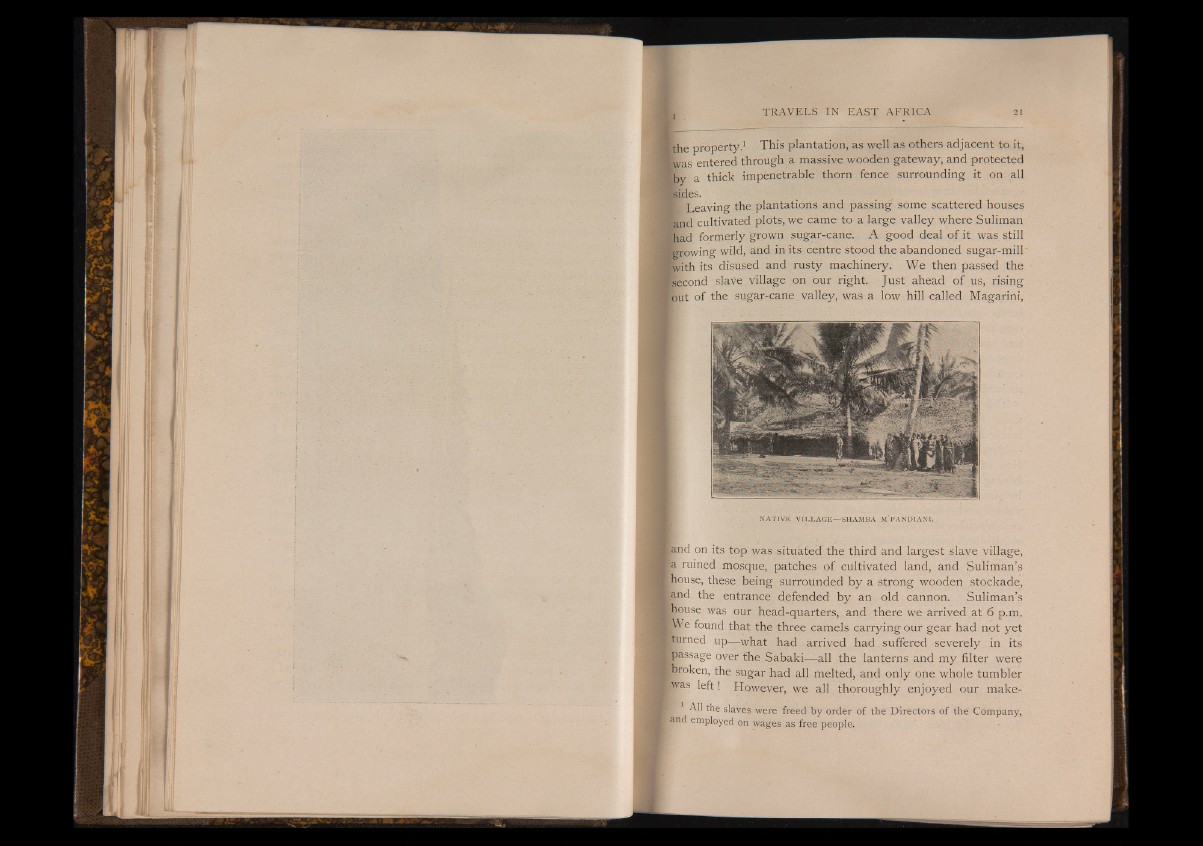
¡the property.1 This plantation, as well as others adjacent to it,
i w a s entered through a massive wooden gateway, and protected
by a thick impenetrable' thorn fence surrounding it on all
«sides.
H Leaving the.plantations and passing some scattered houses
and cultivated plots, we came to a large valley where Suliman
had formerly grown sugar-cane. A good deal of it was still
trowing wild, and in its centre stood the abandoned sugar-mill'
Elth its disused and rusty machinery. We then passed the
fsecond slave village on our right. Just ahead of us, rising
tout of the sugar-cane valley, was a low hill called Magarini,
NATIVE V IL LAGE— SHAMBA M’PANDIANI.
land on its top was situated the third and largest slave village,
fa ruined mosque, patches of cultivated land, and Suliman’s
house, these being surrounded by a strong wooden stockade,
and the entrance defended by an old cannon. Suliman’s
ghouse was our head-quarters, and there we arrived at 6 p.m.
B^e found that the three camels carrying our gear had not yet
fturned up—what had arrived had suffered severely in its
[passage over the Sabaki— all the lanterns and my filter were
Broken, the sugar had all melted, and only one whole tumbler
Ras left! However, we all thoroughly enjoyed our make-
® All the slaves were freed by order-of the Directors of the Company,
and employed on wages as free people.